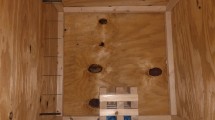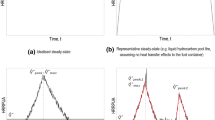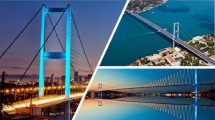Abstract
Fires are one of the major hazards threatening the safety of equipment and humans working in process units. Jet fires are one of the most dangerous types of fires. By estimating the size and geometry of their flames, it is possible to determine the appropriate area for the placement of equipment, buildings and fuel tanks. For this reason, the ability to predict the shape and dimensions of a jet fire is of particular importance. Unfortunately, the existing models and software in this field (such as Phast) have drawbacks such as the lack of consideration of barriers and equipment that make them unreliable. One method that can be used to predict the length, temperature, and thermal radiation of a jet fire and also consider its geometry is computational fluid dynamics (CFD). In this study, a vertical propane jet fire is simulated using the different models of turbulence and radiation, and the results are compared with the empirical results from the literature. The obtained results show that the discrete transfer models, Montecarlo and P-1, are more capable of simulating the propagation of heat radiation, while the Rosseland radiation model is not suitable for this purpose. The SST, BSL and BSL RS models are more suitable for simulating the turbulence and separation phenomenon in propane jet fires, while the k-ε and RNG k-ε models are not appropriate. Considering the corresponding relative errors of the different models, the discrete transfer model and the SST model are proposed for use in future works. The effect of geometry and equipment on the path of the flame were investigated while mainly focusing on the flame area (zoomed in), thereby reducing the scope of the work domain. The results show that the presence of a firewall near the flame or in the direction of the flame can control and significantly reduce the production of radiation.










Similar content being viewed by others
References
ANSYS CFX-Solver Theory Guide ANSYS, Inc. (2017)
Baalisampang T, Abbassi R, Garaniya V, Khan F (2017) Fire impact assessment in FLNG processing facilities using computational fluid dynamics (CFD). Fire Saf J 92:42–52
Casal J, Mares MG, Muñoz M, Palacios A (2012) Jet fires: a “Minor” Fire Hazard? Chem Eng Trans 26:13–20
Cumber PS, Spearpoint M (2006) A computational flame length methodology for propane jet fires. Fire Saf. J. 41:215–228
Gómez-Mares M, Muñoz M, Casal J (2009) Axial temperature distribution in vertical jet fires. J. Hazard Mater. 172:54–60
Gómez-Mares M, Muñoz M, Casal J (2010) Radiant heat from propane jet fires. Exp. Therm. Fluid Sci. 34:323–329
Gopalaswami N, Liu Y, Laboureur DM, Zhang B, Mannan MS (2016) Experimental study on propane jet fire hazards: comparison of main geometrical features with empirical models. J. Loss Prevent. Proc. 41:365–375
Hankinson G, Lowesmith BJ, Evans JA, Shirvill LC (2007) Jet fires involving releases of crude oil, gas and water. Process. Saf. Environ. 85:221–229
Hawthrone WR, Weddell DS, Hottel HC (1949) Mixing and combustion in turbulen gas jets. Proc. Combus. Flame Explos. Phenom. 3:266–288
Heskestad G (1983) Luminous heights of turbulent diffusion flames. Fire Saf. J. 5:103–108
Jang CB, Jung S (2016) Numerical computation of a large-scale jet fire of high-pressure hydrogen in process plant. Energy Sci. Eng. 4:406–417
Jang CB, Choi SW (2017) Simulation and damage analysis of an accidental jet fire in a high-pressure compressed pump shelter. Saf. Health Work 8:42–48
Jang CB, Choi SW, Baek JB (2015) CFD modeling and fire damage analysis of jet fire on hydrogen pipeline in a pipe rack structure. Int. J. Hydrog. Energy 40:15760–15772
Kashi E, Mirzaei F, Mirzaei F (2015a) Analysis of gas dispersion and ventilation within a comprehensive CAD model of an offshore platform via computational fluid dynamics. J. Loss Prevent. Proc. 36:125–133
Kashi E, Mirzaei F, Mirzaei F (2015b) Analysis of chlorine gas incident simulation and dispersion within a complex and populated urban area via computational fluid dynamics. Adv. Environ. Tech. 1:49–58
Kozanoglu B, Zárate L, Gómez-Mares M, Casal J (2011) Convective heat transfer around vertical jet fires: an experimental study. J. Hazard Mater. 197:104–108
Liu Y, Moser A, Sinai Y (2004) Comparison of a CFD fire model against a ventilated fire experiment in an enclosure. Int. J. Vent. 3:169–184
Lowesmith BJ, Hankinson G, Acton MR, Chamberlain G (2007) An overview of the nature of hydrocarbon jet fire hazards in the oil and gas industry and a simplified approach to assessing the hazards. Process. Saf. Environ. 85:207–220
Mbainguebem A, Mouangue R, Bianzeube BT (2017) CFD studies of soot production in a coflow laminar diffusion flame under conditions of micro-gravity in fire safety. J. Taibah Univ. Sci. 11:566–575
Palacios A, Casal J (2011) Assessment of the shape of vertical jet fires. Fuel 90:824–833
Palacios A, Muñoz M, Casal J (2009) Jet fires: an experimental study of the main geometrical features of the flame in subsonic and sonic regimes. AIChE J 55:256–263
Pedersen N (2012) Modeling of jet and pool fires and validation at the fire model in The CFD Code FLACS, M.S. thesis, The University of Bergen
Petera K, Dostál M (2016) Heat transfer measurements and cfd simulations of an impinging jet. In: EPJ web of conferences
Rusch D, Blum L, Moser A, Roesgen T (2008) Turbulence model validation for fire simulation by CFD and experimental investigation of a hot jet in crossflow. Fire Saf. J. 43:429–441
Sklavounos S, Rigas F (2004) Validation of turbulence models in heavy gas dispersion over obstacles. J. Hazard Mater. 108:9–20
Sonju OK, Hustad JE (1985) An experimental study of turbulent jet diffusion flames dynamics of flames and reactive systems. Am. Inst. Aeronaut. Astronaut. 37:320–339
Studer E, Jamois D, Jallais S, Leroy G, Hebrard J, Blanchetière V (2009) Properties of large-scale methane/hydrogen jet fires. Int. J. Hydrog. Energy 34:9611–9619
Taghinia J, Rahman MM, Siikonen T (2016) CFD study of turbulent jet impingement on curved surface. Chin. J. Chem. Eng. 24:588–596
Tao C, Shen Y, Zong R (2016) Experimental determination of flame length of buoyancy-controlled turbulent jet diffusion flames from inclined nozzles. Appl. Therm. Eng. 93:884–887
Wang C (2012) Simulation of heptane jet fire at low atmosphere pressure. Adv. Mater. Res. 517:1070–1073
Wang C, Guo J (2011) Computer simulation of liquid jet fire with various injection conditions. Proc. Eng. 15:3942–3947
Wang CJ, Wen JX, Chen ZB, Dembele S (2014) Predicting radiative characteristics of hydrogen and hydrogen/methane jet fires using fire FOAM. Int. J. Hydrog. Energy 39:20560–20569
Yuen A, Yeoh G, Yuen R, Chen T (2013) Numerical simulation of a ceiling jet fire in a large compartment. Proc. Eng. 52:3–12
Zárate LG, Lara HE, Cordero ME, Kozanoglu B (2014) Infrared thermography and CFD analysis of hydrocarbon jet fires. Chem. Eng. Trans. 39:1357–1362
Acknowledgements
The author appreciates the support provided by the Iranian Research Organization for Scientific and Technology (IROST) in conducting this research.
Author information
Authors and Affiliations
Corresponding author
Additional information
Publisher's Note
Springer Nature remains neutral with regard to jurisdictional claims in published maps and institutional affiliations.
Rights and permissions
About this article
Cite this article
Kashi, E., Bahoosh, M. Jet fire assessment in complex environments using computational fluid dynamics. Braz. J. Chem. Eng. 37, 203–212 (2020). https://doi.org/10.1007/s43153-019-00003-y
Received:
Revised:
Accepted:
Published:
Issue Date:
DOI: https://doi.org/10.1007/s43153-019-00003-y




